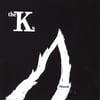 The shaft of the arrow was perfectly ordinary. It was of good manufacture, to be sure -- straight, well-seasoned wood that was light and flexible, but nothing that a hundred other archers couldn't buy or make themselves. It would not snap easily and was too dry to rot. It had been rubbed with a bit of oil so it would stay that way. There was a rough spot which looked like a splinter had been sanded away, but nothing that would harm the flight of the arrow. But in all its workmanship was nothing above competent.
The shaft of the arrow was perfectly ordinary. It was of good manufacture, to be sure -- straight, well-seasoned wood that was light and flexible, but nothing that a hundred other archers couldn't buy or make themselves. It would not snap easily and was too dry to rot. It had been rubbed with a bit of oil so it would stay that way. There was a rough spot which looked like a splinter had been sanded away, but nothing that would harm the flight of the arrow. But in all its workmanship was nothing above competent.The fletching was similarly unremarkable. Sound work, again, and good materials (hawk, reddish with white at the tips), but not anything that would raise an eyebrow. There were some wealthy dilettantes who would take to the field with a quiver full of egret and peacock feathers -- this would be below their standard. The nock was well-centered.
Instead it was the fork-bladed points that made the arrow special. Three serrated blades etched with runes surrounded a central tine which accepted the shaft. The sharpened edges gleamed silver, fading to a pitted black in the flat of the blade. The runes were a deeper black still, glossy with a resin that had been used to fill the strokes of the script. The language was too old to translate, too arcane to understand. It had not been spoken in ten thousand years.
It was a bit of a surprise then, to both arrow and archer, when I drew the feathers to my ear and spoke the name of the arrow in flawless Old Caturrian. I then bade it seek, and loosed it toward the rider bearing the flag of parley.
So began the war of the Ninth Dynasty.
--Steve Kilian





[...] +2 Arrow Like this:LikeBe the first to like this. [...]
ReplyDelete